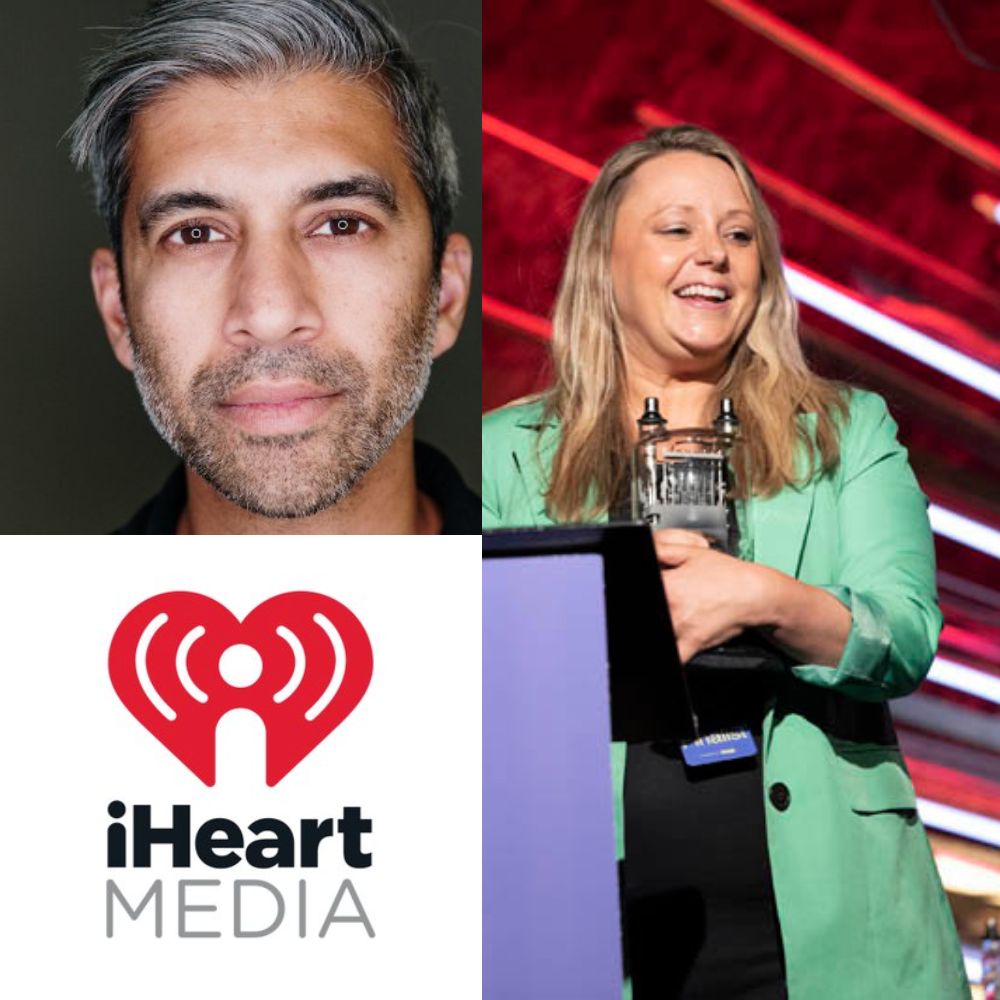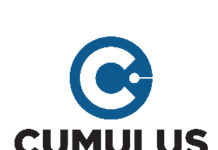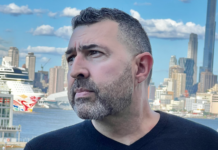
You’ve heard plenty of them: radio ads that suck. Forget about making you remember the client, they make you remember the other preset buttons exist. They’re all over radio and hurt the perception of the great reach medium an advertiser could hope for. Every day this week in Radio Ink‘s headlines, we’re talking with a different expert – from local production to agency veterans – on how to stop the “suck.”
Today we talk with Executive Creative Director Rahul Sabnis and Creative Director Jill Belloma, two of iHeartMedia’s top commercial minds. In their work with The Studio at iHeartMedia, they’ve created award-winning ads at every level, from household brand names down to local clients.
Radio Ink: The focal point of this series is around stopping radio ads that suck, so I’ll ask you both – what percent of ads on the radio right now don’t suck?
Rahul Sabnis: Don’t suck? Probably 15% don’t suck.
Jill Belloma: Exactly. That’s my number. I was thinking 10 to 15% don’t suck.
Rahul Sabnis: Yeah. I’m just talking about the ones that don’t make me want to just roll over into the fetal position. But that is changing. I think that our industry is actually going through a Renaissance and revolution where creativity is being injected back into the space. So yeah, 15% is generous in my opinion, but that could change.
Radio Ink: Can you point to an ad, or ads, outside of what we’ll talk about in a minute, that firmly falls into that 15%?
Rahul Sabnis: I like spots with satire. That’s why one of my favorites, one of the brands out there killing it right now is Progressive. Jill’s heard this to death, but they just know how to have an insight, feel natural, and recognize the time that you’re in someone’s mind to entertain them in a way that is very on point. Great campaign.
Radio Ink: Speaking of great campaigns, congratulations. You all won the 2023 Radio Mercury Award for Broadcast Radio Campaign: Radio Station or Group for your Camelback Mountain Ski Resort campaign. This is The Studio’s 11th year in a row bringing home a Radio Mercury. Tell me about the creative process that went into that.
Jill Belloma: It’s a journey, right? We start with just this little idea, right? This could be fun. We got to start scripting it out to see if it’s even worth a shit. The next day you look at it, you hate it, and you put it down, the next day you look at it, it’s salvageable, and you like it. Then it gets to the point where it’s like, all right, I’m going to take this to Rahul, we need to stop working in the vacuum. Then we tweak it a ton, love it, hate it, then love it again, and go produce it. Let’s bring it to life.
That final week before it went to air, we were all on board and there’s nothing better than the client’s trust and the feeling of, “I think we nailed it. I think this was it.” We were really, really happy when it got recognized at the Radio Mercury Awards because there was a lot of love and time, effort, sweat, and gut checks put into creative like that.
It’s not easy to do. Even though when you listen to the spots, you’re like, man, like I was listening to the Glad (2023’s Radio Mercury Awards Best of Show Winner from FCB Chicago) stuff and I’m like, oh, I’m so jealous. I love that. I wish I wrote that, you know? But I know that they went through the same process as we did.
Rahul Sabnis: I think for me, the one thing is starting with one client who’s willing to go there. When Jill accepted the award on stage, she said multiple times that it was not just the creative. It starts with having a partner who is willing to actually challenge the norms of what people do and not be that 85% of the crap that’s out there. There’s nothing like a client who will genuinely ask, “How do we communicate our benefit differently?” or, “How do we bring some humor into it?”
In this day and age, humor is so freaking hard to do. Everyone’s so scared of their own shadow. So the trust that Camelback had with us and the audience was so crucial.
Radio Ink: Of course, this wasn’t just a singular spot. The Studio won the award for Best Campaign. What goes into taking one idea and then expanding that into a story?
Rahul Sabnis: Well, you have to do it from the start. In movies, they talk about world-building. Look at Marvel. Campaigns have been doing that for years, right? Once you have the architecture of that house built, then you know you have a campaign. Otherwise, if you can’t imagine anything beyond that one, you’ve basically made a singular spot.
Jill Belloma: Specifically for Camelback, this idea could have just been one spot, but it was never meant to be, like the great Bud Light “Real Men of Genius” commercials. You could go on forever about the things that drive you crazy about summer, right? So the initial pitch with the client was that we could make a dozen of these. The hard part was how do we narrow it down to three. We can make these all day long. That’s what I love.
Rahul Sabnis: There was a lot of soul-searching done during the creative process. What made the metaphorical cutting room floor? What didn’t make the cut in terms of things that crush you about summer? The process of editing is just as hard as the creative process.
Radio Ink: You have a unique vantage point. The Studio At iHeartMedia works with local and national brands, which not a lot of production houses in radio do. With talk around national ad revenue falling and local ad revenue rising, where do you see that balance going and how does that shape the future of radio revenue and advertising?
Rahul Sabnis: Both roles of national and local have a place. I’m actually really excited about the rise of local. News is always local. Personalities are local. Local relevancy matters a lot. So many of our campaigns use our on-air influencers to create relevancy in their communities. Radio needs the ability to make a product not feel like a generic brand.
Jill Belloma: The power that air talent have in their markets is so important. These conversations that they’re having with their audience every day are something that traditional commercials just can’t emulate.
Rahul Sabnis: Right. Whether it’s vernacular or those relevant details, when we try to script them, man, sometimes we suck at that. I don’t think AI has come up with that technology. There’s no better salesperson than your best friend who is talking to you in your neighborhood. That’s why local advertising in many ways.
Radio Ink: Rahul, you opened the AI door. How do you think that artificial intelligence is going to impact radio advertising? It’s impossible to know exactly where it’s going at this very early stage, but what are the feelings that you all have about that?
Rahul Sabnis: So many feelings, and oddly enough, most of them positive. AI has become a dirty word, but we’ve been using AI here at iHeart for years to help our programmers understand how to program and what’s more relevant.
I remember the first time Jill and I looked at ChatGPT because I wanted her to see this product. As she looked at this platform, her eyes were wide open and she asks, “Am I out of a job?” And I said, “No, you’re out of the crappy parts of your job.” She just got a writer and a brainstormer. ChatGPT can generate raw materials to free Jill to be the creative director that she is.
Of course, there’s the risk that people will use it in ways that are not so positive. And one of the things that we’re always very careful about is the level of trust with our listeners. We never want to violate that. Audio is the most trusted brand and radio specifically because of the nature of humanity and the connection. We always want to be very forthcoming and upfront about the journey that we’re having with that listener.
Jill Belloma: At The Studio, we’re in this specialized group that is now working in places like Erie, PA, and smaller markets, but a lot of the time those salespeople are on their own. They don’t have the resources. They don’t have the money in the market to utilize The Studio. They’re not writers, but you’re putting them in a position where they have to get something on the air tomorrow. So they’re working every angle they possibly can to get that together. AI is a great tool for them if they know how to use it.
Rahul Sabnis: But now they have to be trained to judge better. Everyone’s taste levels have to go up. Just because you have the tool, doesn’t mean you how to use it or what not to do with it. But that’s going to be part of the fun.
If our number of ads that suck is 85%, that 85% didn’t make itself. Bad radio doesn’t make itself. If you don’t have taste or creative judgment, you’re just actually adding to the cacophony that’s out there instead of bringing brighter and more interesting ideas to our listeners. So that’s gonna be the thing to watch with AI.
Radio Ink: So how do you hone that taste?
Rahul Sabnis: There is the 10,000 hours concept, where it takes 10,000 hours of doing something to become an expert. Creativity is a muscle and you have to wield it again and again. And the only way you do it right is to actually consume and listen with two ears. If you don’t do that, if you’re listening passively and creating a version of what you think is right versus actually consuming and recognizing the art of what it is, then you’ll miss out.
Any person can conceivably get to a solid level of creativity if you actually commit to the craft. I didn’t go to school for writing. I’m self-taught. I had to knuckle down and make it a part of my life. So the journey of becoming better comes from actually caring about the craft versus just trying to shortcut the journey and doing it as fast as possible.
Radio Ink: Double question to close here. What is one thing that has you excited and positive about the state of radio advertising and one thing that you could change for the future if you could?
Rahul Sabnis: When I joined iHeart seven years ago from the advertising world, a lot of colleagues asked why I was going to radio. Honestly, I was really excited about the way radio communicates. That the intimacy between the listener and the voice on the other side is something that nothing else has yet to replicate. That’s what excites me.
Jill Belloma: There are just so many more outlets now and ways to use audio. I get excited because it’s not just a radio spot playing on a station. An advertiser can use so many new spaces to reach and engage, like mid-roll on a podcast. Just talking to people with smart devices and using smart audio, we can hyper-target to you, and I’m going to do the best job I possibly can in entertaining, engaging, and informing you for my client.
Rahul Sabnis: My negative is external. It’s the ongoing perception gap for what radio stands for. I think that people still think of radio as an object, not a communicative style. Radio is critical to the fabric of America as a whole, and to the way we communicate as human beings. We have an aesthetic that I think is often overlooked.
If we don’t start to get those people to a new mindset, we will atrophy as a space. And it’s a space that needs to be nurtured constantly with new voices and mindsets so that we can evolve into the next version of radio.
Jill Belloma: My negative would also be perception, and that ties into your first question. People look down on radio because so many ads suck, but when we’re sitting there at the Radio Mercury Awards, we get the privilege of listening to amazing spots back to back to back. You know the medium’s alive. You know there’s creativity. When you’re listening to that creative, you’re completely floored.
Rahul Sabnis: Yeah, just to be surrounded by people like that, that are putting out that good work, it’s a privilege. Radio needs to take that first step in fighting the negative perception. Can we get from 15% to 20%?
In tomorrow’s installment, we talk with Spanish Broadcasting System Chief Content Officer Jesus Salas. Jesus isn’t just a stickler for great ads, he’s dedicated to filling SBS with ads that sound great. What do ads that suck do to the content ecosystem? Find out in tomorrow’s headlines.
Read Part 1 of “Why Do So Many Radio Ads Suck?” with iconic adman Terry O’Reilly here. Read Part 2 with Seven Mountains Media’s TJ Hower here.
To get the most out of your copy, ads, and sales, check out Radio Ink’s Radio Masters Sales Summit – September 13 and 14 in Cincinnati, Ohio.









I’d be most interested in learning how “the studio“ is funded and part of that question is what does the participating station pay for these creative services? Does the station split, say, a 15% agency fee with “the Studio“ and call it “full service“ for the client and eliminate an outside ad agency since I suppose the placement is then done within the group as well. Could you walk us through how that works?
Great, useful and relatable interview and article, by the way. Thanks.